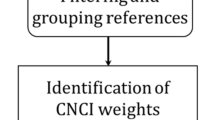Abstract
Researchers continually strive to communicate their findings to peers, hoping to receive recognition for their contribution in a not-so-distant future. The prevailing idea of “publish or perish” becomes imperative when researchers are applying for competitive grants or academic promotions. Choosing a suitable journal has become an important issue as thousands of journals are available. One of the aspects considered by researchers is the journal’s indexation status. Scopus continuously evaluates journals submitted by publishers for indexation, and later, to verify if quality is maintained. During this re-evaluation process, some publication concerns may be raised at journal or publisher level. Consequently, Scopus periodically issues a list of discontinued journals. However, not all journals update their websites in order to inform readers that they have been discontinued. This study shows that 56 journals that were discontinued in 2016 currently affirm on their websites that they are indexed by Scopus. In addition, another 20 journals discontinued in 2016, which do not specifically state that they are indexed by Scopus, include a widget from SCImago that may generate confusion about their current indexing situation. For some journals it seems that the emphasis is placed more on the publishing end of the business than the dissemination of research findings. This study shows that regular updates are among the responsibilities that editorial teams must maintain to ensure the quality and accuracy of the information posted on journal websites.

Similar content being viewed by others
References
Abbott, A., Cyranoski, D., Jones, N., Maher, B., Schiermeier, Q., & Van Noorden, R. (2010). Metrics: Do metrics matter? Nature, 465(7300), 860–862.
BEIC. (2017). Biblioteca Electronica de Informacion Cientifica. http://www.beic.cl/home/que-es-beic/. Accessed January 2018.
BOE. (2017). Resolucion de 23 de Noviembre de 2017, de la Comision Nacional Evaluadora de la Actividad Investigadora, por la que se publican los criterios especificos aprobados para cada uno de los campos de la evaluacion. http://www.boe.es/boe/dias/2017/12/01/pdfs/BOE-A-2017-14085.pdf. Accessed January 2018.
Chen, H., Chen, C. H., & Jhanji, V. (2013). Publication times, impact factors, and advance online publication in ophthalmology journals. Opthalmology, 230(8), 1697–1701.
CONICYT. (2017). Bases concurso nacional de proyectos Fondecyt Regular 2018. http://www.conicyt.cl/fondecyt/files/2017/06/BASES-CONCURSO-REGULAR-2018.pdf. Accessed January 2018.
DINA. (2017). Reglamento de calificacion y registro de investigadores en ciencia y tecnologia del Sistema nacional de ciencia, tecnologia e innovacion tecnologica – SINACYT. http://docs.google.com/a/concytec.gob.pe/viewer?a=v&pid=sites&srcid=Y29UY3I0ZWMuZ29iLnBlfG1hbnVhbC1kaW5hfGd4Ojc5NmMyMTVkMDhmZWlzZWE. Accessed January 2018.
Elsevier (2014). Frequently asked questions (FAQ`s): The role of an editor. http://www.elsevier.com/_data/assets/pdf_file/0005/95117/SC_FAQ_Role_of_an_Editor_22092014.pdf. Accessed January 2018.
Erfanmanesh, M., Tahira, M., & Abrizah, A. (2017). The publication success of 102 nations in Scopus and the performance of their Scopus-indexed journals. Publishing Research Quarterly, 33, 421–432.
Frandsen, T. F. (2017). Are predatory journals undermining the credibility of science? A bibiliometric analysis of citers. Scientometrics, 113(3), 1513–1528.
Grzybowski, A., Patryn, R., & Jaroslaw, S. (2017). Predatory journals and dishonesty in science. Clinics in Dermatology, 35, 607–611.
Houghton, F. (2017). Ethics in academic publishing: a timely reminder. Journal of the Medical Library Association, 105(3), 282–283.
Lindner, M. D., & Nakamura, R. K. (2015). Examining the predictive validity of NIH peer review process. PLoS ONE, 10(6), e0126938.
Manca, A., Martinez, G., Cugusi, L., Dragone, D., Dvir, Z., & Deriu, F. (2017). Predatory open access in rehabilitation. Archives of Physical Medicine and Rehabilitation, 98(5), 1051–1056.
Mehrdad, J. (2015). The story of fake impact factor companies and how we detect them. Electronic Physician, 7(2), 1069–1072.
Meneghini, R. (2003). Scielo (scientific electronic library online) project and the visibility of “peripheral” scientific literature. Quimica Nova, 26(2), 155–156.
MINCYT (2017). Instituciones habilitadas para biblioteca electronica de ciencia y tecnologia. http://www.biblioteca.mincyt.gob.ar/instituciones/index. Accessed January 2018.
Ramamoorthi, P., & Jeyshanka, R. (2016). Is there a correlation between access to journals and their productive use? Annals of Library and Information Studies, 63, 24–30.
Retraction Watch (2016) https://retractionwatch.com/2016/08/26/u-s-government-group-sues-publisher-charging-it-with-deceiving-researchers/. Accessed April 2018.
Scopus (2017). https://www.elsevier.com/solutions/scopus/content/content-policy-and-selection. Accessed December 2017.
Shokraneh, F., Ilghami, R., Massomi, R., & Amanollahi, A. (2012). How to select a journal to submit and publish your biomedical paper? Bioimpacts, 2(1), 61–68.
SINAB (2017). Listado de recursos electronicos. http://www.bases.unal.edu.co/subjects/databases.php. Accessed January 2018.
Strielkowsky, W. (2018). Setting new publishing standards after the Beall´s list. The International Journal of Occupational and Environmental Medicine, 9(8), 108–110.
Wijewickrema, M., & Petras, V. (2017). Journal selection criteria in an open access environment: A comparison between the medicine and social sciences. Learned Publishing, 30(4), 289–300.
Acknowledgements
This work was supported by the grant Proyecto de Financiamiento Basal (PFB-016).




